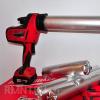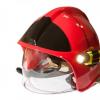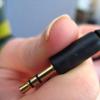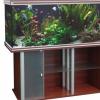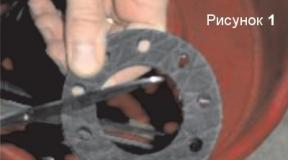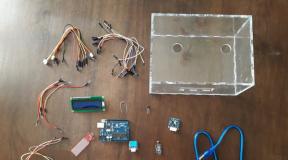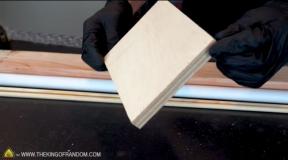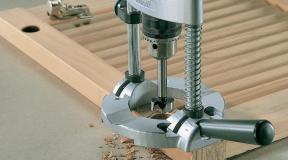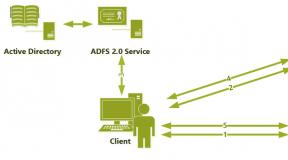Correct slope. What exercises should not be done
The expectant mother should categorically refuse work that involves lifting weights or sudden movements, so activities such as rearranging furniture, buying food for the whole family, lifting weights (even if it is the most beloved child weighing 10 kg) should be shifted to the shoulders of relatives and loved ones.
A pregnant woman can please herself with "light" types of housework: cooking, cleaning the apartment, washing (using a washing machine, of course) and ironing.
But even when doing such work, some general recommendations should be taken into account. So, for example, if the work involves standing in one place for a long time and causes discomfort in lower limbs, then it should be discarded. Also, you should not work "for wear and tear" and overcome fatigue - at the slightest sign of fatigue, you must stop working and rest.
Cooking, ironing during pregnancy
Prolonged standing in one place leads to stagnation of blood and lymphatic fluid in the vessels of the legs, causing swelling and varicose veins.
How to stand? When doing standing work expectant mother it is necessary periodically - preferably hourly for 5-7 minutes - to arrange a rest for yourself: sit on a chair, substituting a low bench under your feet. This pose improves blood circulation and relaxes the back muscles. If you can’t sit down, then you need to find the correct, most comfortable body position. Often a pregnant woman just wants to straighten her back and “feed” her stomach forward, this is due to a shift in the center of gravity, which during pregnancy is much higher than necessary for balance - in the solar plexus area. It turns out that the “excess” weight (the ever-increasing uterus, fetus and amniotic fluid) in front further disturbs the “fragile” balance, leading to aching pains, which are the result of overloading the back muscles.
For more comfortable standing, if possible, use a low bench 20-30 cm high. If you lean on it alternately with one or the other leg bent at the knee, you can prevent excessive tension in the back muscles.
To improve circulation in your legs, if you have to stand in one place for a long time, try the following: tighten your toes and then relax them; Stand on tiptoe and shift your body weight from one foot to the other. This exercise is recommended to be performed as soon as you feel discomfort from prolonged standing, or every 10-15 minutes.
Cleaning the apartment during pregnancy
changing hormonal background during pregnancy affects the state of cartilage and connective tissue. Cartilages (including those forming intervertebral discs) become more vulnerable. Therefore, not only in the second half of pregnancy, but also in the first trimester, it is important not to overload the spine. Do not bend over or lift heavy objects, as well as do sharp turns, side bends, etc. All this can lead to injury of altered intervertebral discs and joints: microcracks appear in them, which cause back pain. Through such cracks in the discs of the spine, even intervertebral hernias can come out (the shell of the intervertebral disc is destroyed, and its contents (nucleus) go beyond the vertebrae into the spinal canal, squeezing the spinal roots).
If pain in the lower back or back during pregnancy increases or appears during the performance of a particular housework, wearing special bandages that support the stomach can help. Exact recommendations for wearing a bandage can only be given to you by your doctor, who is well acquainted with the peculiarities of your pregnancy.
How to bend over? First you need to slightly bend your knees and redistribute your body weight on them, then you can lean forward slightly and take / lift what you need. You can also successfully pick up an item by getting on one knee. It is better to wash the floor not on your haunches or knees, but to use a mop; if you need to wash it by hand, it is better to do this on all fours.
And yet, allow yourself during pregnancy not to refuse the help of loved ones. If the mother-in-law, coming to visit, offers to help with cleaning the house or cook dinner - agree: you need rest now.
sedentary work during pregnancy
Such work as sewing or knitting, many expectant mothers do with great pleasure. But despite the positive psychological effect, it also has dangerous moments that can adversely affect the health of the mother and the course of pregnancy.
How to sit correctly? It is very important to sit with your back against the back of a chair, and if necessary, a small pillow should be placed at the level of the lumbar spine, it is advisable to put your feet on a small bench. Any sedentary work must be interrupted from time to time: prolonged uninterrupted sitting causes stagnation of blood in the veins of the legs and swelling, and increases back pain. For this reason, every hour you need to get up and walk for 5-10 minutes. At this time, you can go to the toilet, just walk around or do standing breathing exercises.
A good help in maintaining the correct posture while sitting can be a "correct" chair. It is obligatory to have armrests that perform shoulder support and allow you to relieve tension from the cervico-shoulder muscle group and distribute the load evenly. Ideally, if the chair is also equipped with a roller for lumbar support and the ability to change the inclination of the back, and the rocking mechanism with individual weight adjustment will make it possible to change position from time to time.
If you need to write a lot or work on a computer, then you also need to take a break for 5-10 minutes at least every hour.
Expectant mother should not sit cross-legged! This not only disrupts blood circulation, thereby reducing the amount of blood flowing to the fetus, but also creates a greater load on the spine, increasing pain.
Movement during pregnancy
Hiking is very useful for pregnant women. It should be remembered that movement tones the muscles of the legs, preventing the risk of varicose veins. But everything is good in moderation: as soon as you feel tired, give yourself a break - sit on the nearest bench and rest for five to ten minutes. If you do not have the opportunity to take walks in a park or square, then choose a street with not very heavy traffic so as not to breathe polluted air.
How to walk? You need to walk, keeping the body straight and relaxing the shoulders. And of course, high-heeled shoes will have to be forgotten. The optimal heel height is no more than 3-4 cm. This is due to hormonal changes in the body, when all ligaments, including those of the ankle joint, become looser. In the future, this weakness can lead to flat feet or aggravate it. In addition, the increased load on the muscles and vessels of the legs, in turn, can lead to varicose veins.
What not to do when pregnant?
A pregnant woman is contraindicated:
- work that requires sharp and jerky movements (for example, beating carpets, etc.);
- work for which it is necessary to climb a stool or stepladder;
- work requiring heavy lifting;
- work using household chemicals, especially products with a pronounced odor;
- any repair work.
In case of a threat of termination of pregnancy, it is required to exclude ANY work and observe STRICT bed rest!
In any case, follow the safety rules:
- work with detergents in gloves;
- do not hang clothes, standing on stools or stepladders - it is better to get a dryer, the height of the strings of which can be adjusted, or a dryer that can be installed on the bath;
- do not lift a heavy bucket of water (the maximum weight that a pregnant woman can lift is no more than 5 kg!), pour or empty it with a ladle;
- evenly distribute the load in your hands, if you need to convey something.
Forward bends are a simple exercise known to many since childhood, which allows you to develop the flexibility of the spine and tone the muscles of the press, back and buttocks. In addition, this exercise is included in the TRP standards. Therefore, for all those who want to have a beautiful flexible body and be proud of their physical form, forward bending is a mandatory item of the program.
Why do?
Leaning forward is a completely natural movement for the human body. The exercise does not require any physical preparation or sports equipment. It is ideal for self-training, at home.
Effect on the body:
- Forward torso improves spine flexibility and hip joint mobility.
- There is a stretching training for the hamstrings and muscles of the back of the thighs. Especially if you are doing the exercise with straight legs.
- Strengthening the muscles of the press, back, buttocks.
- Improving blood circulation, preventing diseases of the vessels of the head.
Contraindications
In fairness, it should be noted that forward bends from a standing position, like any other exercise, have contraindications. In fact, they are associated with two features of movement: the inverted position of the body and the impact on the spine. Under certain conditions of the body, these effects are undesirable:
- High blood pressure, headaches, diseases of the vessels of the head.
- Problems with the spine, in which the tension of the muscles of the lumbar region is not recommended.
Often, with problems with the spine, it is recommended not to tilt from a standing position, but to raise the pelvis from a squatting position, while leaving your hands down. Due to this, the position when the body is parallel to the floor is excluded from the exercise. It is this position that requires maximum tension in the muscles of the lower back. After all, when you have already bent over, the back muscles are relaxed.
Execution technique
Despite the popularity of the exercise, the technique of its implementation has its own characteristics. Let's consider it in more detail.
- Stand up straight, place your feet shoulder-width apart, straighten your back. In the lower back, a natural deflection should be maintained, the chest should be straightened.
- Tighten your abs and, keeping your back straight, lower your body down, turning at the hip joints. If your current level of flexibility does not allow you to reach the floor with your hands, do not round your back, but bend your knees slightly. Flexibility will develop over time, and you will be able to fully perform a forward bend with straight legs.
- Hold at the bottom point for 1-2 seconds and, due to the effort of the gluteal muscles, return to the starting position. Complete right amount repetitions.
All the time, focus on the fact that you are not pulling the body up due to the muscles of the back. This is not only wrong, but also dangerous. The muscles of the back hold the body in upright position, and raise his gluteal muscles.
Also, while bending the torso forward, attention should be paid to breathing. Expert opinions differ on this point. The easiest and safest option is to stick to the anatomical features of the human body. Namely, in a standing position, the chest is straightened, the lungs can accommodate a sufficient amount of air. At the bottom, vice versa. Therefore, it is logical to lower the body on the exhale and raise it on the inhale.
You can start by doing 10-15 tilts in 2-3 sets. The exercise should be done at a slow pace, without jerking, completely under control. Strive to lower yourself from a standing position into an incline with straight legs.

Forward torso is a very simple exercise that has been familiar to us since childhood. Despite its simplicity, it is very useful, as it allows you to tone many important muscles, improves flexibility and has a beneficial effect on health. Although the technique for performing slopes is elementary, there are a number of nuances that must be followed when performing them.
Leaning forward is a very natural position for the human body. To perform the exercise, you do not need special equipment and physical training. Its simplicity and accessibility allows you to safely include it in home exercises. Forward bending exercise affects the body in the following ways:
- It improves the flexibility of the spine, as well as the mobility of the hip joints, which has a beneficial effect on their health and prevents many troubles.
- Stretching the hamstrings, back muscles, buttocks, and the press is trained.
- Also, slopes improve blood circulation, reduce the risk of diseases of the vessels of the head.
Forward bends: what muscles work?
Forward bends, the benefits of which you already know, work out the muscles of the press and back. The buttocks are also involved and rear part hips.


Execution technique
Forward bends to the floor - a simple exercise, but it will not be superfluous to learn them. correct technique. This will help to achieve maximum efficiency and prevent unpleasant consequences.
- You need to stand up straight, put your feet shoulder-width apart, straighten your back. Maintain a natural arch in your lower back. The chest should be straightened.
- Tighten your press. Keeping your back straight, lower your body down, twisting at the hip joints. If your flexibility is not good enough to reach the floor with your hands, do not round your back, but slightly bend your knees. Flexibility will be trained over time, and you will be able to fully lean forward with straight legs.
- Having reached the bottom point, linger in it for a couple of seconds, then return to the starting position, using the muscles of the buttocks. Repeat the exercise as many times as necessary.
During the exercise, always make sure that the body does not stretch due to the muscles of the back. This is a violation of technology, which can be dangerous. The muscles of the back should keep the body in a straight position, and it should rise due to the buttocks.
Performing forward bends from a standing position, watch your breath. By the way, experts differ on this issue. The simplest and safest option is to focus on the anatomical features of the human body. That is, in a standing position, our chest is straightened so that the lungs can accommodate maximum air. At the bottom, everything should be the other way around. Therefore, it is better to lower the body on the exhale, and raise it on the inhale.
If you are a beginner, start doing the exercise in 2-3 sets of 10-15 tilts. It is recommended to perform the exercise smoothly and slowly, without jerking, fully controlling your every movement. It is important to strive to be able to fully bend over from a standing position while keeping your legs straight.


Types of exercise
Having mastered how to do forward bends correctly, you can increase the load using additional burden: barbell, neck, dumbbells.
Another effective variation of the exercise for working out the muscles is the forward bend from a sitting position. This exercise came to fitness from the world of yoga, where it is known as Paschimottanasana asana. In the people it is also called the "fold".
- You need to sit down, lowering yourself on your buttocks, straighten your legs in front of you. Stretch your toes and point towards you. Press the shins to the floor surface.
- Exhaling, lean forward slightly, keeping your back straight. Grab your knees or shins with your palms.
- Use your hands to move forward. Your task is to stretch the spine behind the crown up and forward. Try not to round your back, otherwise the exercise will not bring any benefit.
- Now relax, as you exhale, press your stomach as close as possible to your legs, as if bending in half. Reach forward with the crown. Performing a forward bend while sitting, you do not need to strain your shoulders and hold your breath. Try to hold this position for 30-60 seconds. With a little practice, you can maintain this position for a couple of minutes.
- You need to get out of this position correctly. Movements must be slow. Several breath cycles should come out. Pull your lower back slightly back, raise your head and bend slightly towards your chest and back. Slowly rise up, gradually, so that in the end your back is at a right angle to the floor.


Precautions and contraindications
Forward bends from a standing position, the benefits of which you already know, like all other exercises, have their contraindications. They are associated with two features of this movement: the body in an inverted position and the impact on the spine. Undesirable it is in such cases:
- Problems with the spine, which suggest a ban on the tension of the muscles of the lower back.
- It is also recommended to refrain from bending over for headaches, high blood pressure, diseases of the vessels of the head.
For problems with the spine, it is often recommended not to bend over from a standing position, but replace this is an exercise by lifting the pelvis from a squatting position, in which the arms remain below. Thus, the position is excluded in which the body is parallel to the floor - it is in it that the muscles of the lower back are maximally tensed.
When performing a forward torso strength exercise, avoid common mistakes. These include tearing off the heels from the floor, as well as opening the fingers if they are in the "castle". Tilts of the torso in a sitting position also have a number of contraindications. These include the following:
- displacement of intervertebral discs;
- sciatica, arthritis;
- exacerbation of diseases of the respiratory organs, in particular, seasonal allergies;
- severe back pain;
- pregnancy.
Tilts from a sitting position, like the rest of the exercises from yoga, also suggest a number of nuances. These include the following:
- Before you start stretching, slide your heels forward on the floor. This will give the opportunity to take the buttocks back, which will allow the body to take a more comfortable position.
- Breathe as deeply and comfortably as possible. Try to maintain concentrated tension in your legs, and relax your shoulders and arms in time.
- For high-quality stretching of the spine, try to turn the hips inward, and spread the buttocks in different directions.
- Tilts are performed correctly if you seem to curl up in the area of \u200b\u200bthe hip joints. So you can test yourself.
- Do not turn your feet with the soles inward.
- Don't rush or make sudden movements. Not everyone immediately manages to reach their knees with their foreheads. Keep your back straight throughout the exercise.
- Try not to help yourself too much with your hands, as this increases the risk of injury to the lower back. It is also important not to bend your knees.
Forward bends: video
Thanks to the video, you can see how the forward lean is performed correctly from a standing position. You can also master the forward bend from a sitting position, the technique for which was described above. These simple and effective exercises help improve both health and fitness.
Spine man is strong and fragile at the same time. On the one hand, it can withstand a load 18–20 times greater than a concrete pillar of the same thickness. On the other hand, a simple draft can cause irreparable harm to our spine. A person is able to lift a car weighing almost half a ton, and an ordinary slope while washing floors can make us disabled.
The growth of the spine ends by the age of 20-24. After 30 years, almost all people have microcracks in the intervertebral discs. From this, local, local pains in the cervical, thoracic or lumbar regions can occasionally occur when lifting weights, sudden movements, hypothermia, excitement, psycho-emotional overload.
But it is not for nothing that the spine was called in the old days the backbone: it serves as a support for the muscles and internal organs of a person. Therefore, with the pathology of the spine, not only the back suffers, but also many internal organs: gastrointestinal tract, liver, spleen, etc. So that age-related changes in the spinal column do not lead to serious diseases, try to follow the recommendations that will help keep the spine in good condition and avoid unpleasant consequences.
How to sit correctly
During long periods of desk it is most convenient to sit with your back firmly leaning in the place of its bend on the back of the chair. You should sit straight, without tilting your head or upper body forward so as not to strain your muscles. If, for example, you sit at a computer for a long time, get up every 15 minutes for half a minute and sit down again.
The height of the chair must be adjusted so that the seat is at the level of the knee joints. The back of the thigh should only slightly press on the edge of the chair. If the pressure is too high, sitting will soon become uncomfortable, and blood circulation in the lower legs will be difficult. Use a footrest to relieve pressure on the back of your thigh.
How to stand
A person experiences fatigue in the back, shoulder girdle and back of the head when one has to stand for a long time. To prevent these painful sensations, you should stretch your arms up from time to time, bend back and take a deep breath. When sipping, the feeling of fatigue is reduced and a surge of energy is felt. When working on your feet, or standing in line, it is recommended to change your posture at least every ten minutes.
Try to lean on each leg in turn so that the weight of the body falls on them alternately. Be sure to change the position of the legs: walk in place, stepping from heels to toes. It is necessary for the human body. Muscles, blood vessels, tendons, joints and bone tissues are maintained in a normal functional state by regular movements.
How to bend over
For work that requires leaning, such as over a workbench or a dish washer, leaning should not be done at the expense of the lower back, but by bending at the knee joints. If there is a cupboard hanging over the sink, you can lean your head against it to unload cervical region spine.
Every housewife has to wash the floors. Do you know what kind of load falls on the lumbar spine when you are standing, bending over with a rag in your hands weighing one kilogram? Believe it or not: 200 kilograms! Therefore, it is better to wash on all fours, while the load will be much less - about 50 kilograms.
When working with a vacuum cleaner, it is advisable to use a long enough tube so as not to bend over. When dusting under furniture and other hard-to-reach places, try getting on one knee rather than bending over. When making the bed, instead of leaning forward, kneel down: this will also reduce the load on the spine. When lifting something heavy, try to rest your hand on a chair or table so as not to overload your spine.
If you have a garden, do all the work only on your knees or sitting on a small bench. Learn to bend properly. The principle here is simple: the less you bend, the healthier you will be. When harvesting in the garden, for example, picking apples from an apple tree, try not to reach for them by raising your arms above your head. Stand on a stable bench or ladder: this will make it possible not to raise your arms above shoulder level. When lifting boxes of fruit, avoid turning the body: making rotational movements is one of the most common causes of “lumbago”.
When is the right time to lift weights?
In order not to harm your own axial skeleton, follow the rules for carrying weights. When lifting the load, avoid turning the torso. It is advisable to divide a heavy burden into parts and carry them in turn. It is better to hold the load in both hands (especially if you have to carry it far) and as close as possible to yourself - in this case, the spine has a much lower load. When lifting something heavy, bend your knees, not your back.
intervertebral disc in lumbar withstands a load of 420 kg / cm2. In other words, every healthy person can lift and rearrange the Zhiguli car without harm to his health! However, it all depends on how he does it. If you bend your legs at the knee joints and, without bending your lower back, straighten them, rearranging the car, nothing bad will happen. If you bend over, the intervertebral joint will break.
If you need to move heavy things over considerable distances, it is more advisable to carry them on your back, for example in a backpack, and not in your hands or in a bag over your shoulder. The backpack leaves hands free, this method ensures uniform distribution of the load on the spine. However, in the absence of a backward curve in the thoracic spine (kyphosis), it is not recommended to wear a backpack on the back.
Returning from the store with purchases, use a special cart, it is less harmful than carrying heavy bags. It is better to lift and carry loads alone or together using improvised means, since a stretcher, a wheelbarrow or a trolley, this also helps to avoid harmful overloads of the spine. When lifting weights, don't hesitate to ask someone for help.
How to properly sit behind the wheel
When driving, it is important to take a comfortable position so that the back has good support in the place of its bend. You should sit straight, periodically changing your posture slightly, but without tilting your head forward. With prolonged concentration of attention, sometimes you can not notice the faint signals of pain, fatigue and discomfort that warn you to change your posture.
When traveling in a car over long distances, it is necessary to periodically get out of it and warm up: walk around or, sitting in a chair, lean back and hang relaxed arms. It is useful to take a few deep breaths and relax the muscles of the back of the head and shoulder girdle. You can tilt your head forward and turn it to the right and left several times.
How to sleep
You need to sleep on a semi-soft bed, the soft part of the bed should be at least 15–16 centimeters thick. The head during sleep should be on a rectangular pillow so that the shoulder lies on the couch, and the pillow occupies the space between the shoulder and the head. In the supine position, the head should be parallel to the couch.
In no case should you sleep on different cushions, this leads to a lateral tilt of the head, to compression of the neurovascular bundle of the vertebral artery. Circulatory deficiency can lead to a stroke or heart attack.
With pain in the spine, it is often difficult to sleep lying on your stomach, but once you get used to this position, it is difficult to find another, more comfortable one. It is possible to use a pillow under the abdomen, which will straighten the forward curve in the lumbar spine and reduce pain. You can put one foot on the other, and put your hand under your head. This pose is suitable for most people suffering from back pain.
When reading lying down, try to keep your neck straight, it is better to sit in bed half-sitting so that the load on the cervical vertebrae is minimal. In order to get a real charge of vivacity, you need to sleep at least 9-11 hours, since the muscles relax only in eight hours. In no case should you jump out of bed at dawn and do gymnastics - this violates the physiological rhythms of the human body. You need to get up slowly, lying down after waking up for another 5-15 minutes.
|
Avoid hypothermia and drafts. Muscle tension at the site of attachment to the vertebral disc indicates a violation of the axial skeleton. On the other hand, tissue inflammation leads to impaired blood circulation around the spine, and consequently, the occurrence of certain diseases. To prevent this, in cold and windy weather, with high humidity, the neck should be wrapped in a scarf and a hat should be worn. Many people suffering from pain in the neck and shoulder girdle suffer from pain in the temples. This is due to the fact that when the muscles of the neck and shoulder girdle are tense, the temporal muscles are also involved. Headache can be relieved by massaging the temples with the tips of your fingers in a light, circular motion from the ear towards the eye. |
The rules are not burdensome, but there are no back problems!
Forward bends are an extremely important exercise for the health of the lower back and hip joints. This is an absolutely indispensable exercise if. So I decided to tell and show you
How to do forward bends while sitting
I will review the technique for performing the exercise from my stretching course. It is called "front crease" or "forward bend sitting on the floor."
The exercise requires a really strong back and good stretching and. Accordingly, by performing a forward bend while sitting on the floor, you greatly strengthen your back and stretch the muscles of the buttocks and hamstrings.
Sit up straight, stretch your legs forward.
Bend your knees, pull them towards you and grab your hands on the feet of the same legs. Tighten and arch your lower back.

Then gently unbend your knees, continuing to hold your feet with your hands. Keep your back straight (this is extremely important - do not slouch or round your back!). Try to fully straighten your legs.

Straightening your legs, if possible, additionally lean forward, helping yourself with your hands. Don't round your back!

Feel the tension in the lower back, the stretch in the buttocks and hamstrings (usually closer to the popliteal region), in the muscles of the lower leg.
Be sure to follow the advice on how to develop flexibility. Hold this position for 30-60 seconds. Then slowly release your legs and straighten up. It is necessary to perform at least 2-3 sets of exercises with a short pause between sets.
The video will capture the nuances. In my performance, the forward bend turned out to be not ideal, since there was no opportunity to warm up well before shooting. But, I think, I managed to convey the main idea of the slope.
As you can see, here we are using the stretching training technique. And this is far from the only way to develop flexibility. But it is highly recommended for beginners as one of the safest and least demanding in physical form.
When you achieve sufficient flexibility, you can not use the technique described above with the legs. It is enough just to tilt the body forward and linger in this position. But first you have to work.
Many beginners in stretching have to learn to take their original sitting position. That is, they cannot even sit on the floor and keep their back straight and vertical. In this case, you should start by learning to sit with a straight back. In the first lessons, you can help yourself with your hands, leaning them on the floor behind you. After such an exercise, you should lie on the floor, pull your knees to the body and try to relax your back.





